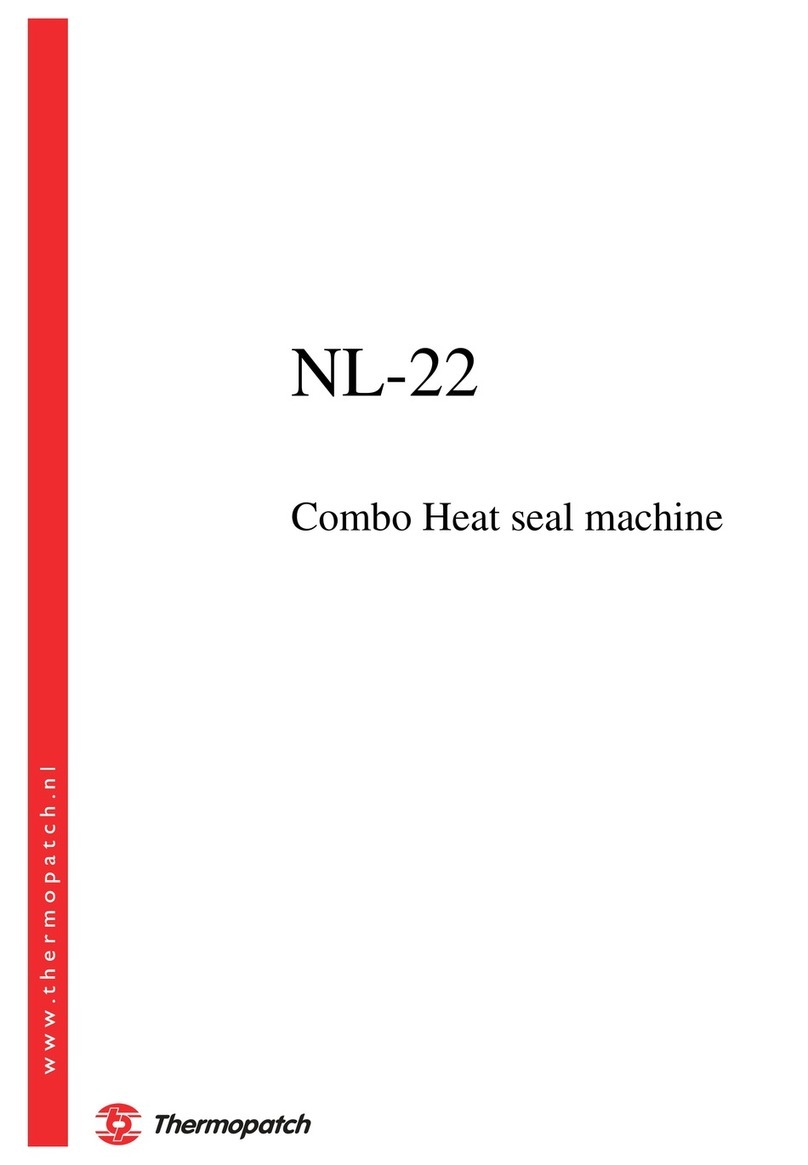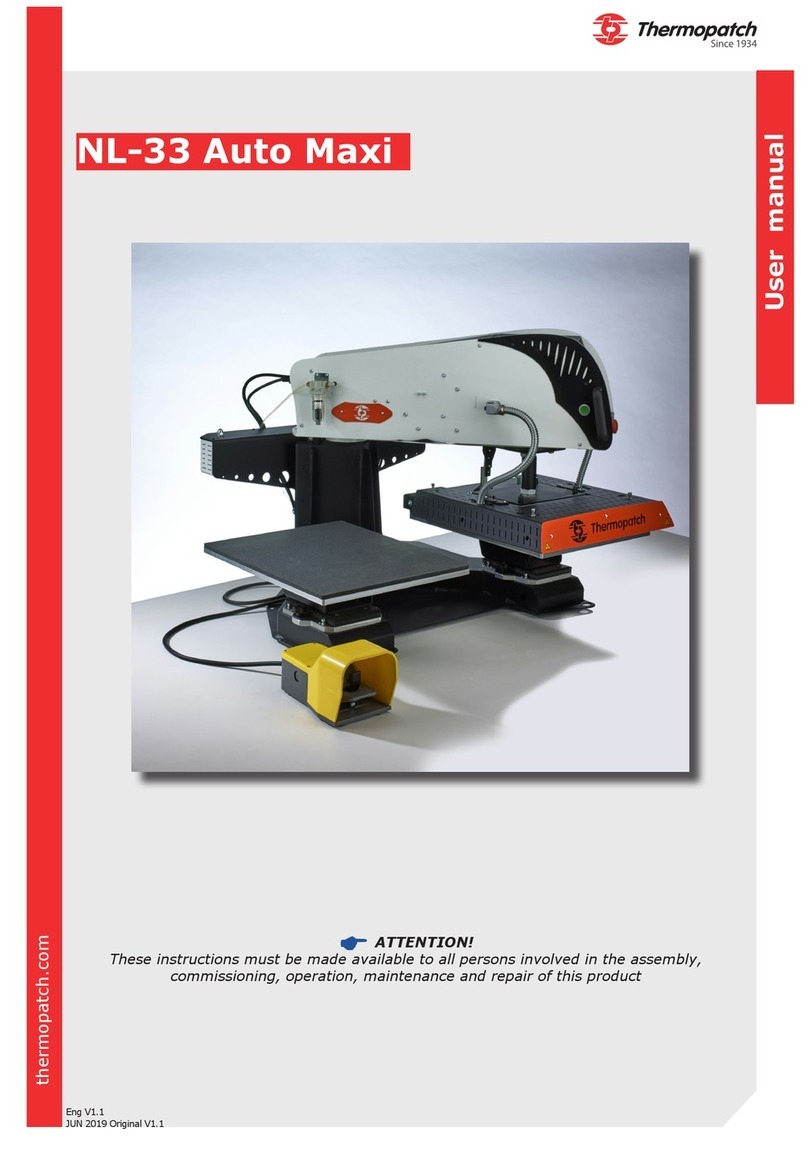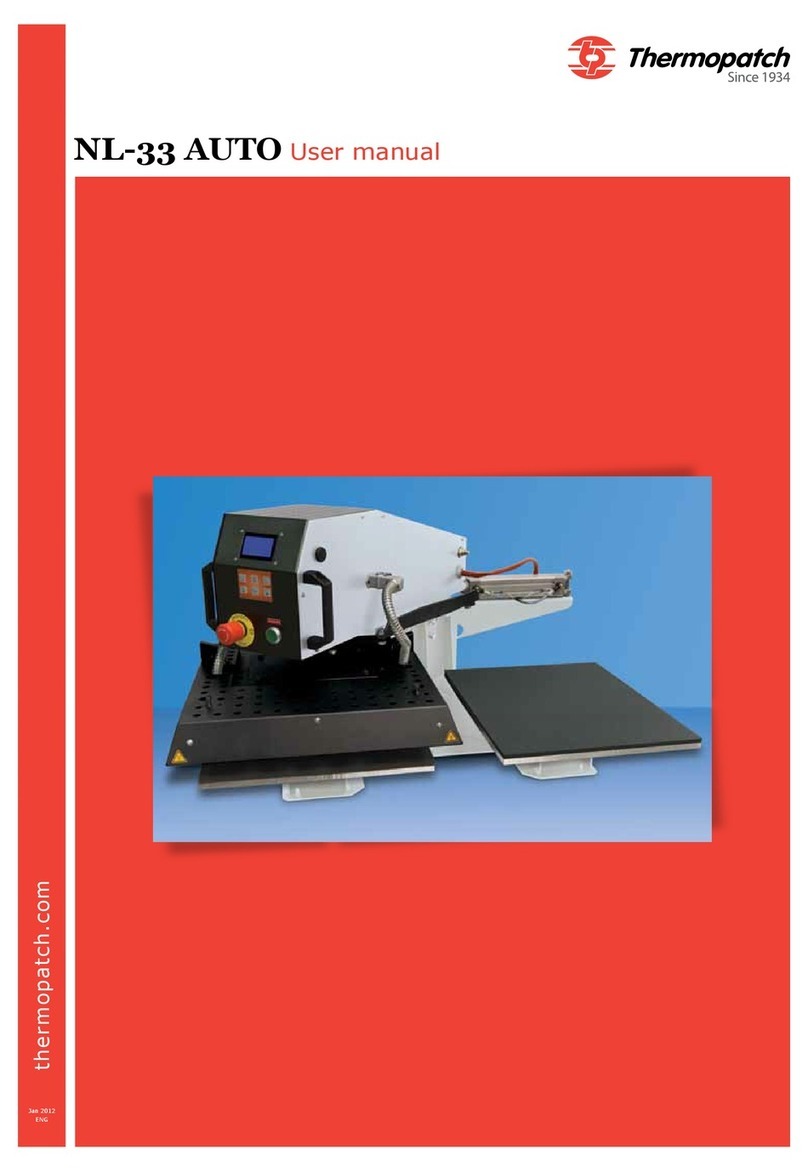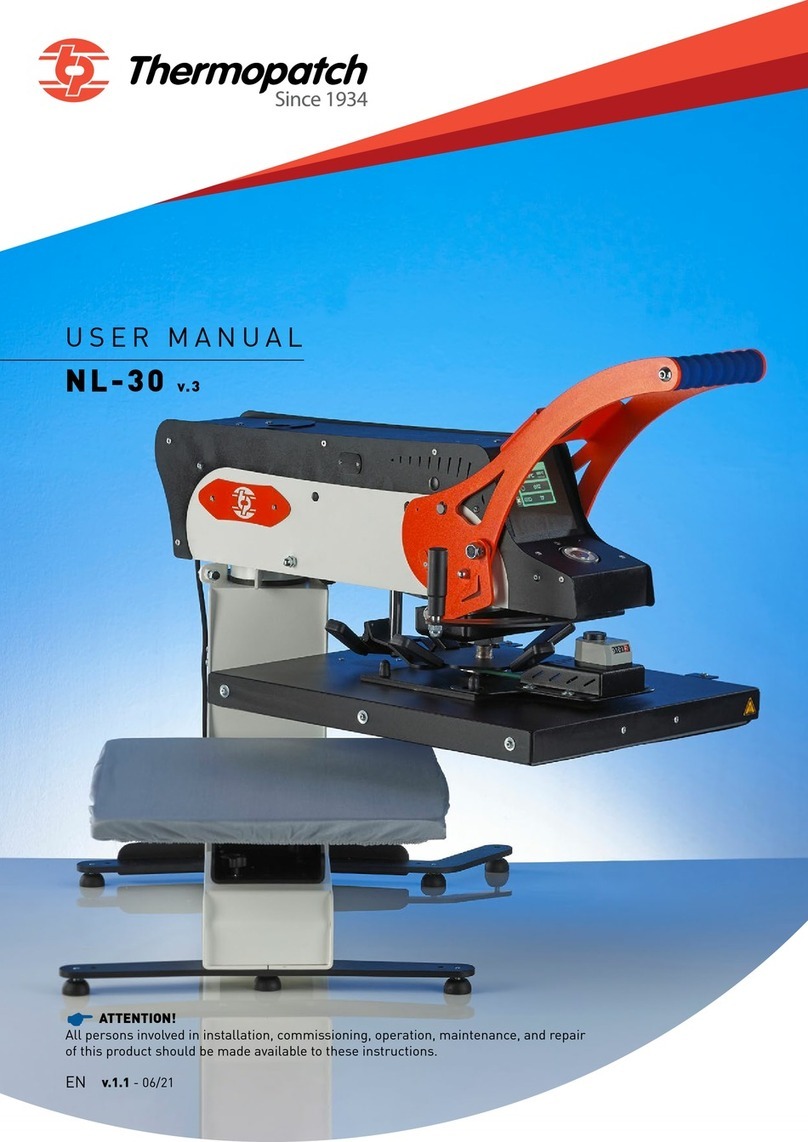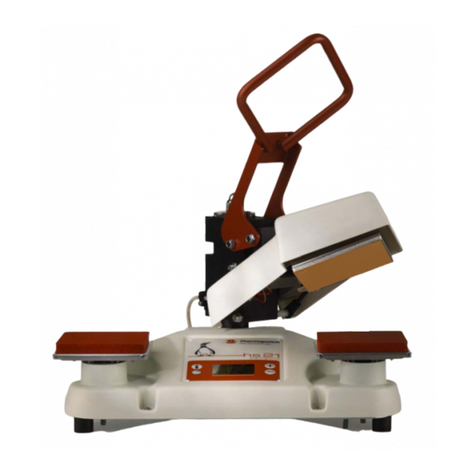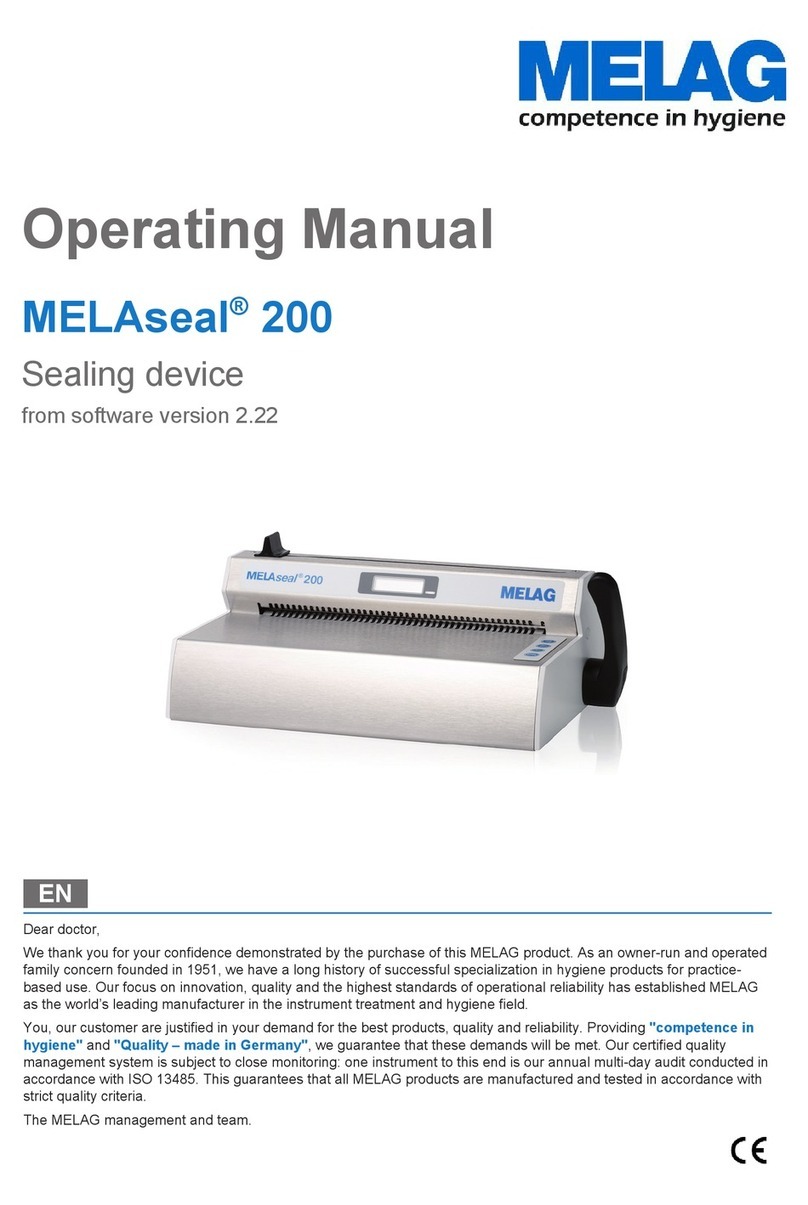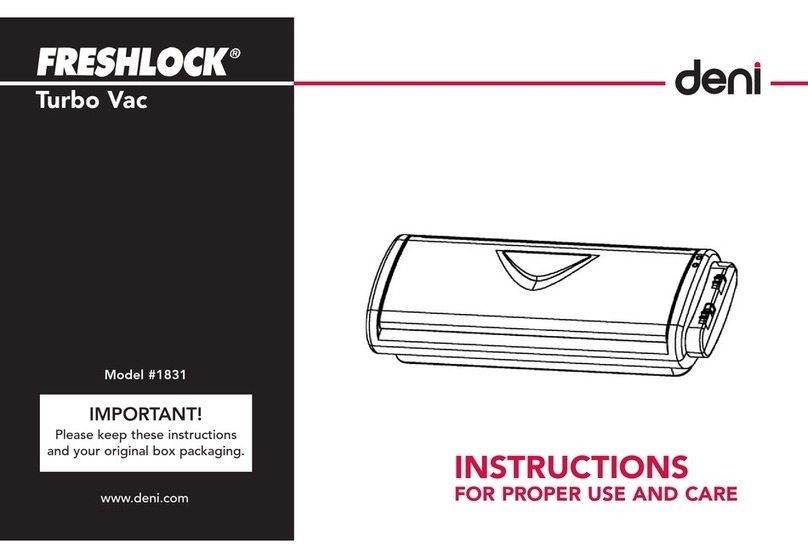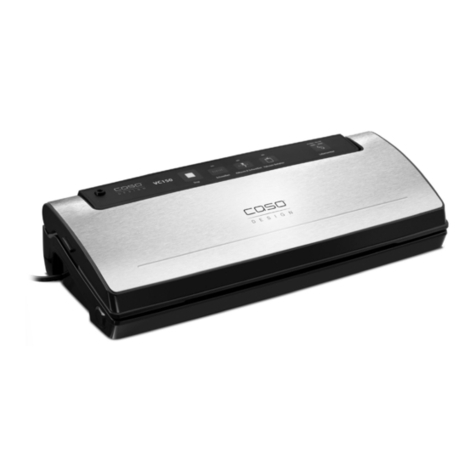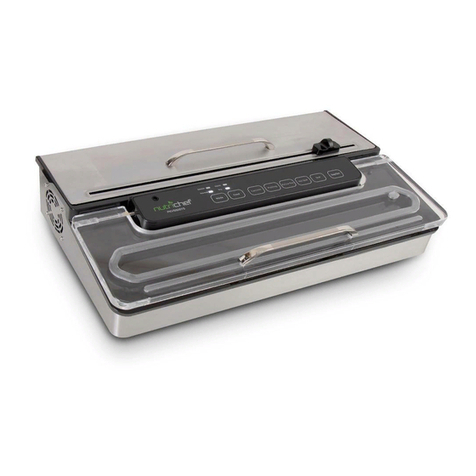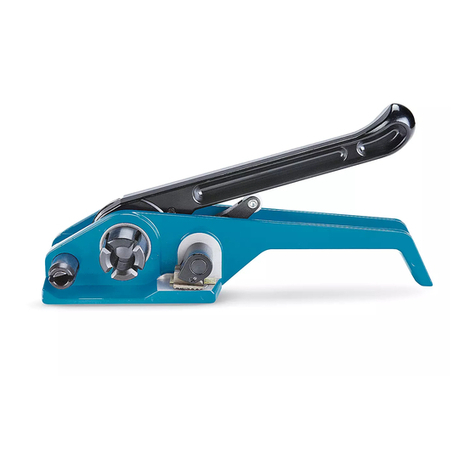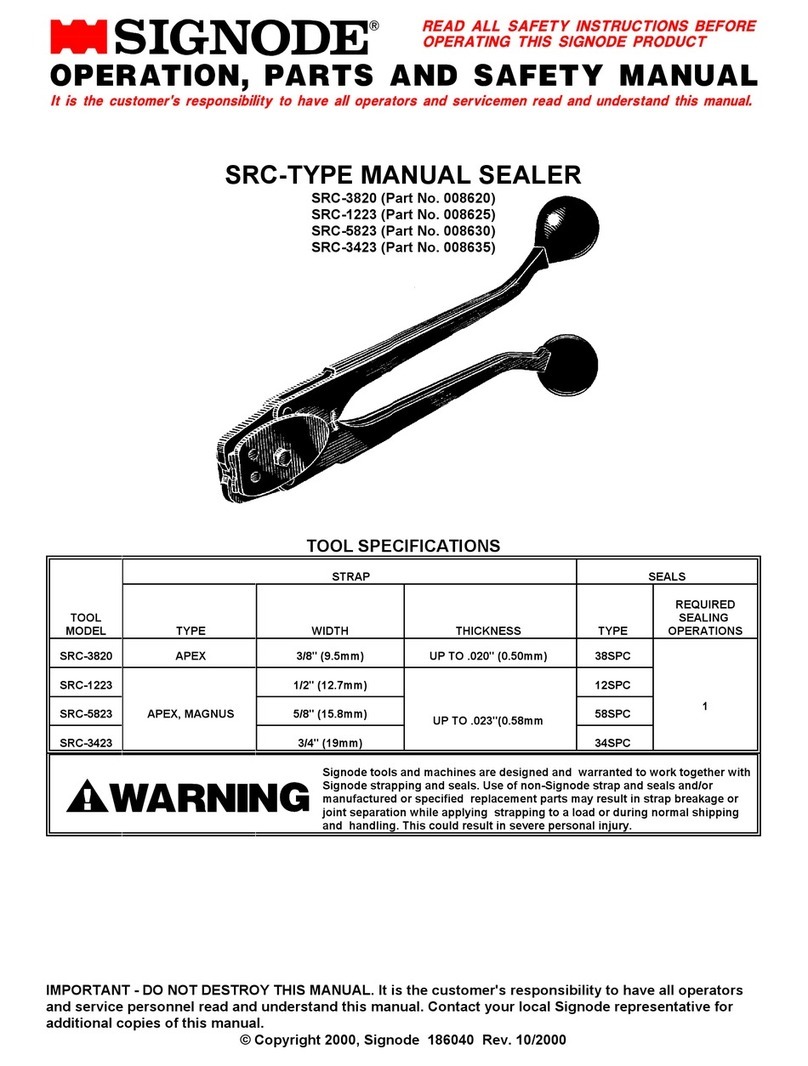
thermopatch.com
Manual HS-4-C V.2.1 ENG Original Version QC/TDPT/mn March 2020 10
Procedure to change desired Sealing Cycle Time:
The SEALING CYCLE TIME of the HS-4-C heat seal machine has
been set at the factory to 12 seconds. To change the SEALING
CYCLE TIME, please follow the procedures below:
1. Press the select/save button twice.
2. Press + or - button to set the desired time.
3. Press select/save to save the setting.
Sealing Pressure:
A label to indicate the direction in which to turn the Lower
Press Platen is mounted directly below the Lower Press
Platen. To increase inter-platen pressure, turn the Lower
Press Platen counterclockwise. To decrease the inter-platen
pressure, turn the Lower Press Platen clockwise. The Pressure
Settings in the Heat Sealing Guide on page 2-3 are obtained
as follows:
1. Turn the Lower Press Platen clockwise until it has bottomed
out against the machine base.
2. Turn the Lower Press Platen counterclockwise until the rst
“click” is detected. This Pressure Setting is zero pressure.
3. To set the Lower Press Platen to a selected Pressure
Setting, count the number of “clicks” turning the Lower
Press Platen counterclockwise, increasing pressure.
4. To set the Lower Press Platen to a new selected Pressure
Setting from and existing setting, count the number of
“clicks” from the existing setting, turning the Lower Press
Platen clockwise or counterclockwise.
Settings may vary depending upon garment thickness.
Normally, higher pressures will produce more effective
heat seals. However, the use of excess pressure may force
adhesive through the fabric, with an undesired result.
CAUTION! USE OF EXCESS PRESSURE CAN CAUSE THE
HS-3-C, HS3CES AND HS-4-C MACHINES TO
BECOME LOCKED IN A CLOSED POSITION
AND DIFFICULT TO OPEN. EXTREME
PRESSURE MAY SEVERLY DAMAGE THE
MACHINE.
Difculy in locking the Seal Arm Handle of the HS-3-C,
HS3CES or HS-4-C machines in a closed position is an
indication of too much inter-platen pressure. To prevent
excess pressure when sealing thick garments, screw the
Lower Press Platen all the way down. A Lower Press Platen
that is worn from use can cause insufcient inter-platen
pressure. The Lower Press Platen should be replaced with
Lower Press Platen SPA43941. When the pressure is too high,
preventing the machine to open by itself, this has to be done
manually. After this, switch off the machine for 5 seconds and
switch it on again, resetting the machine.
thermopatch.com
